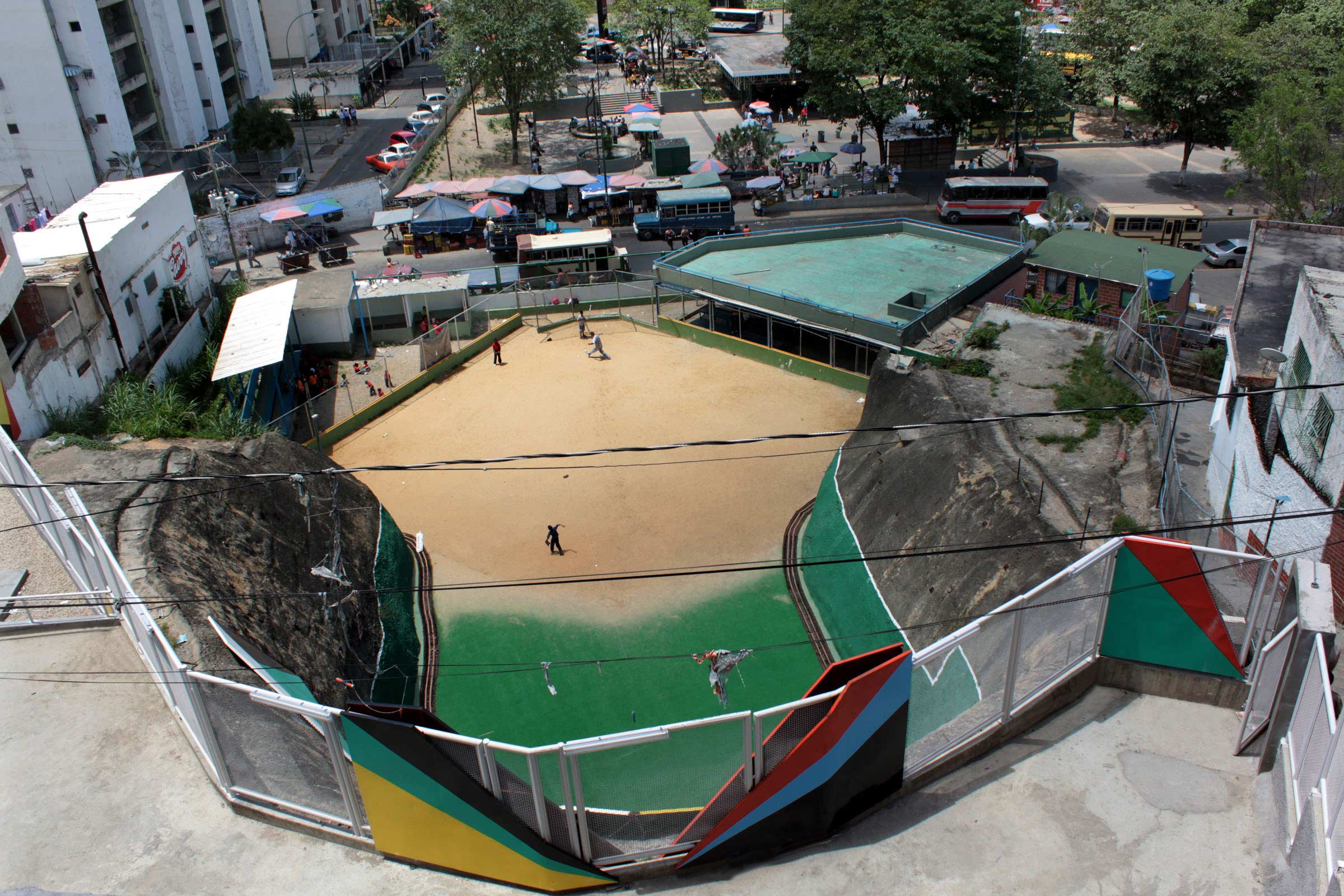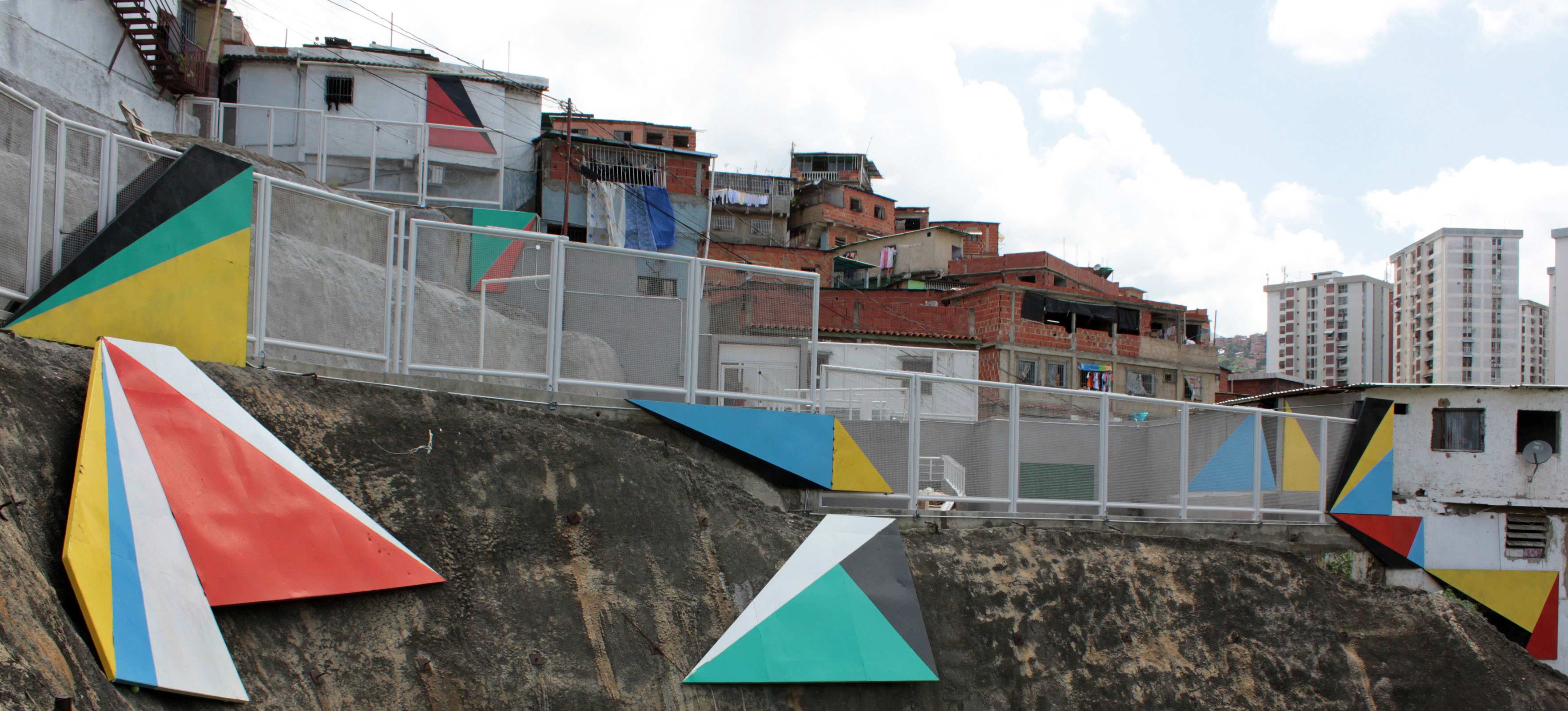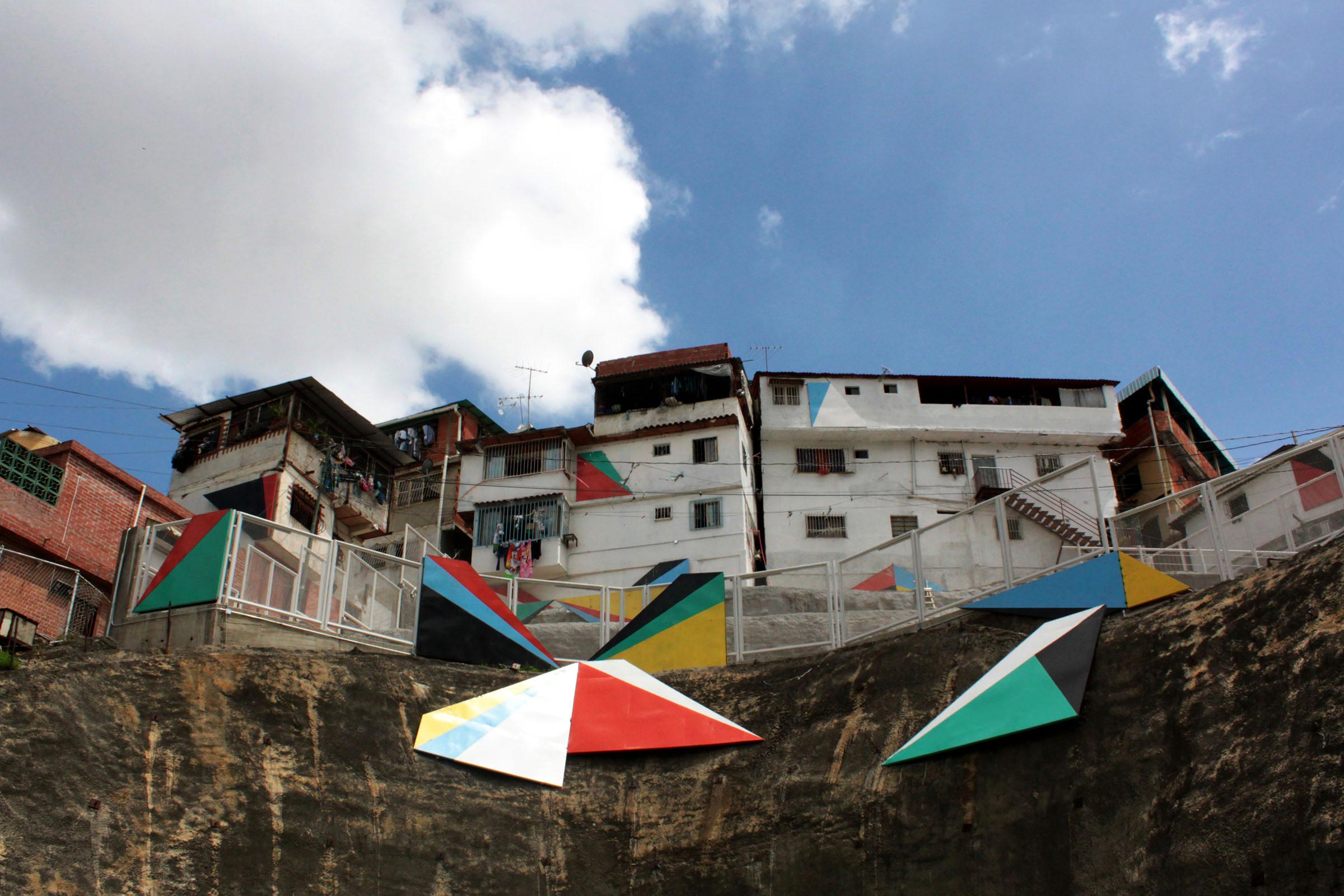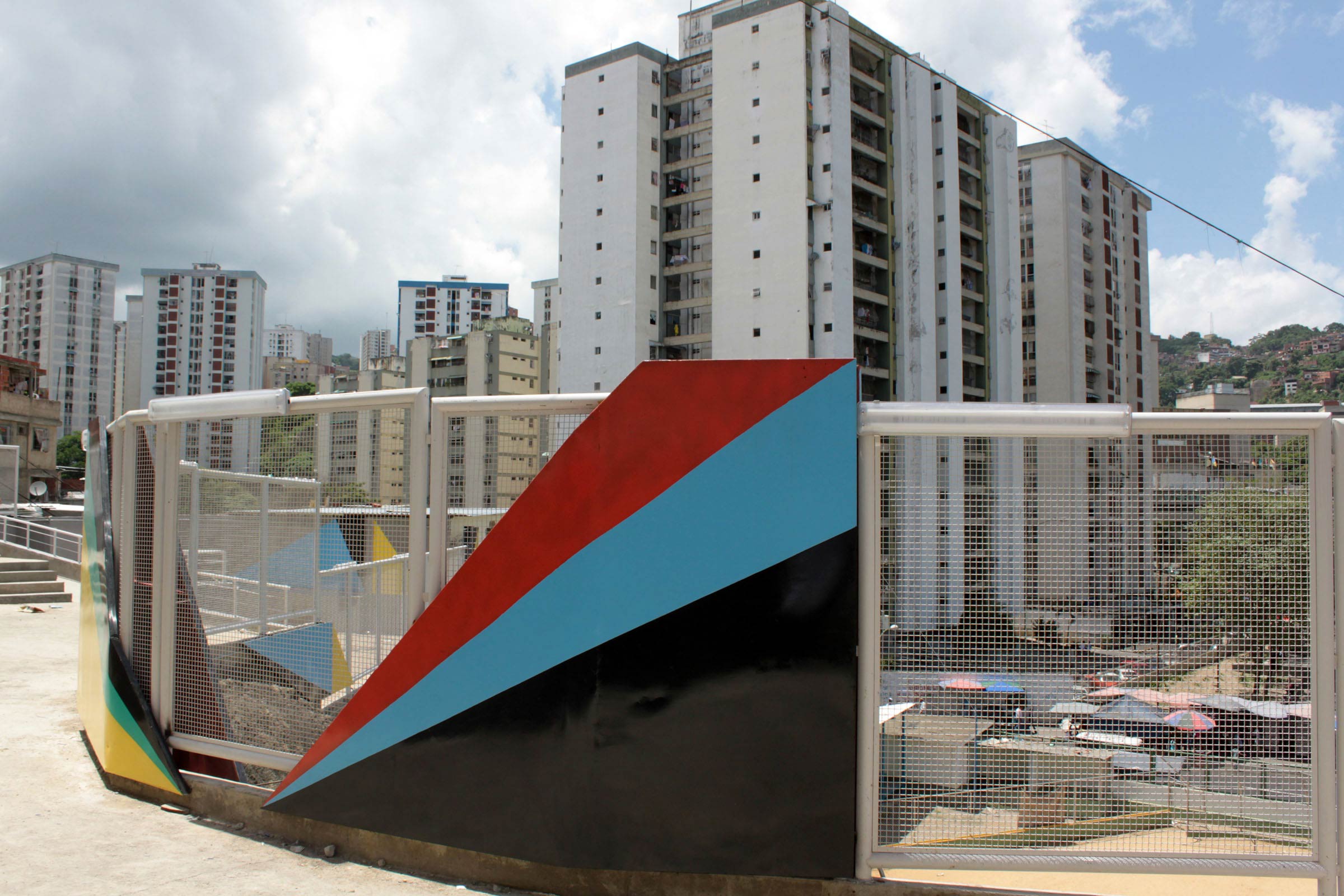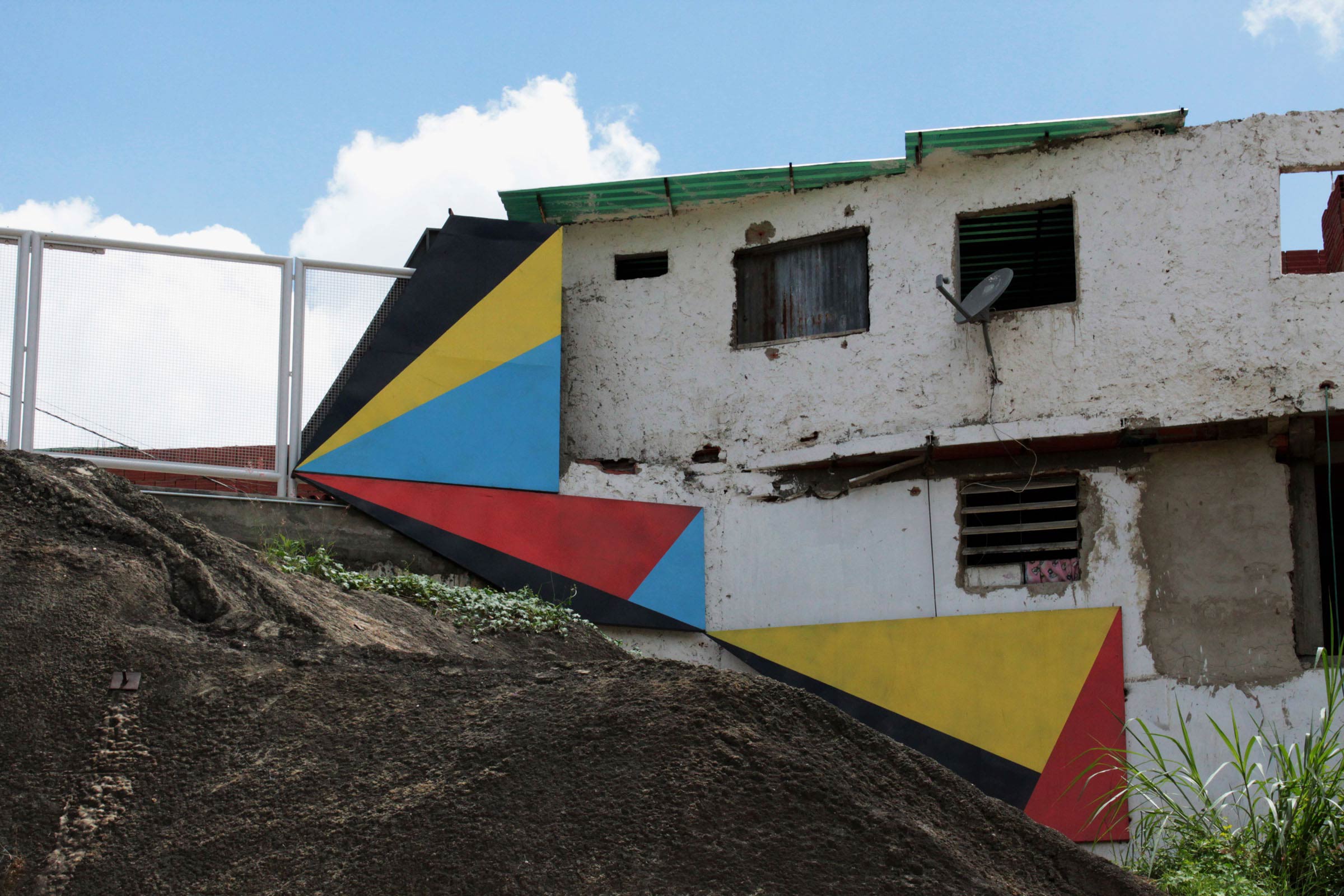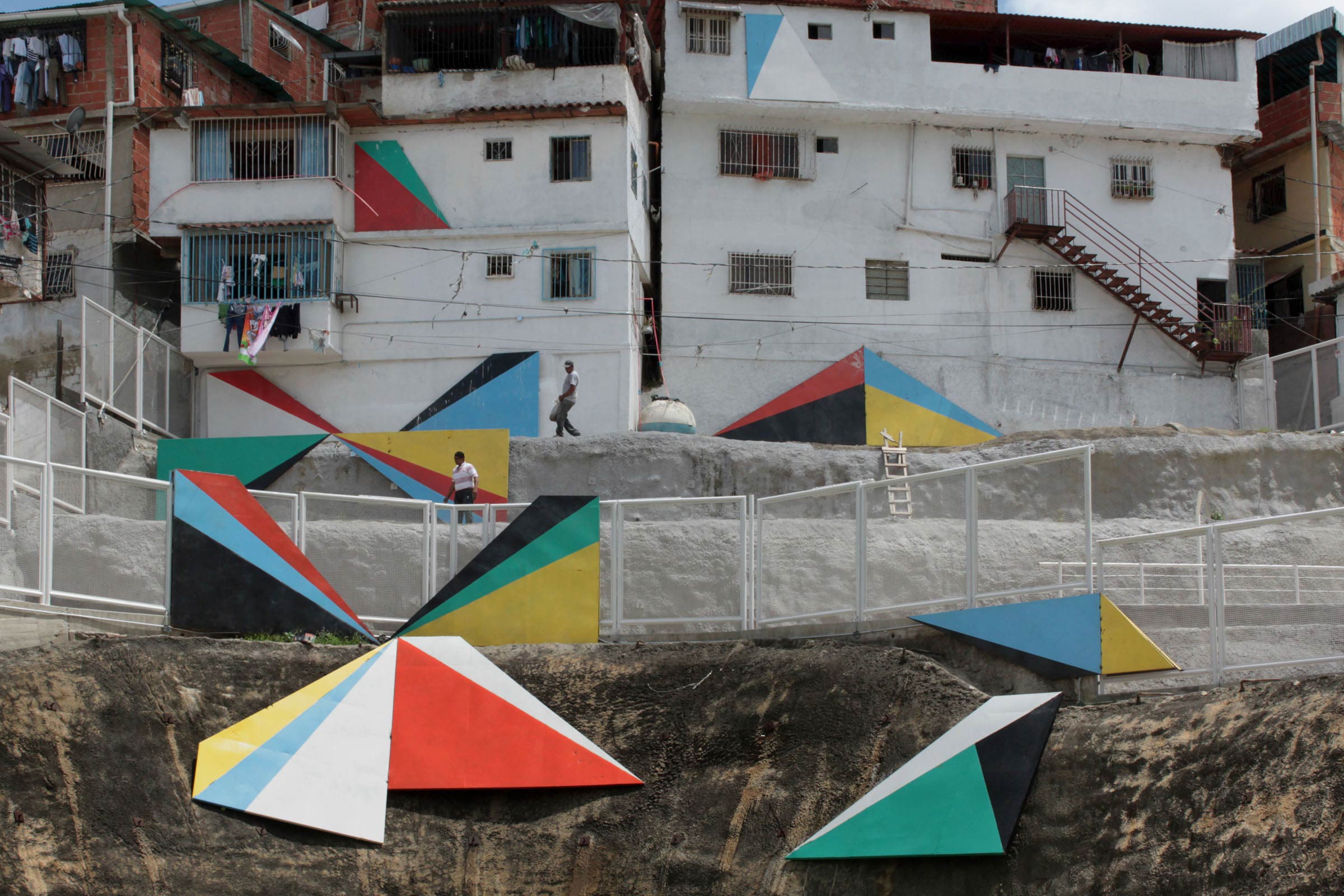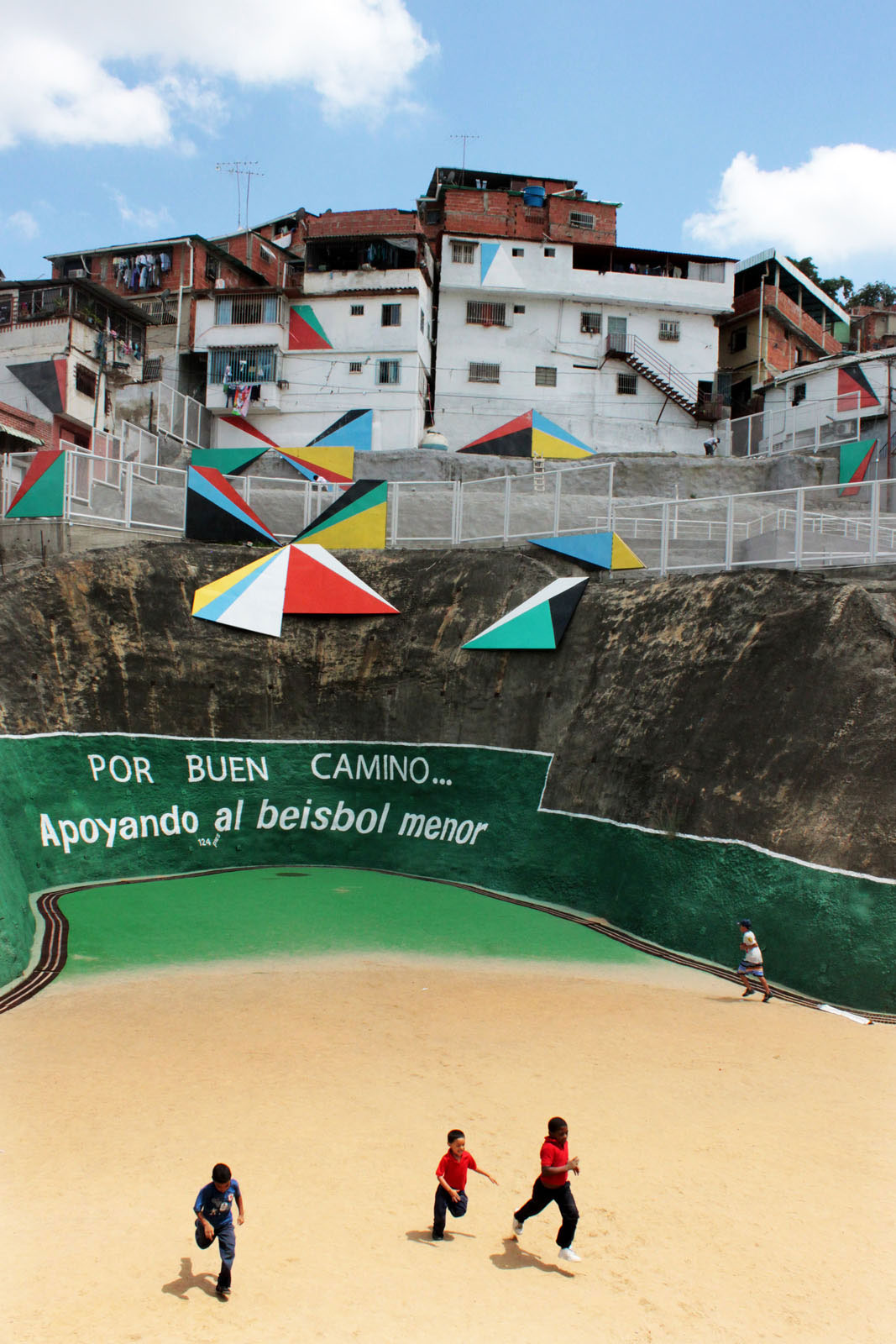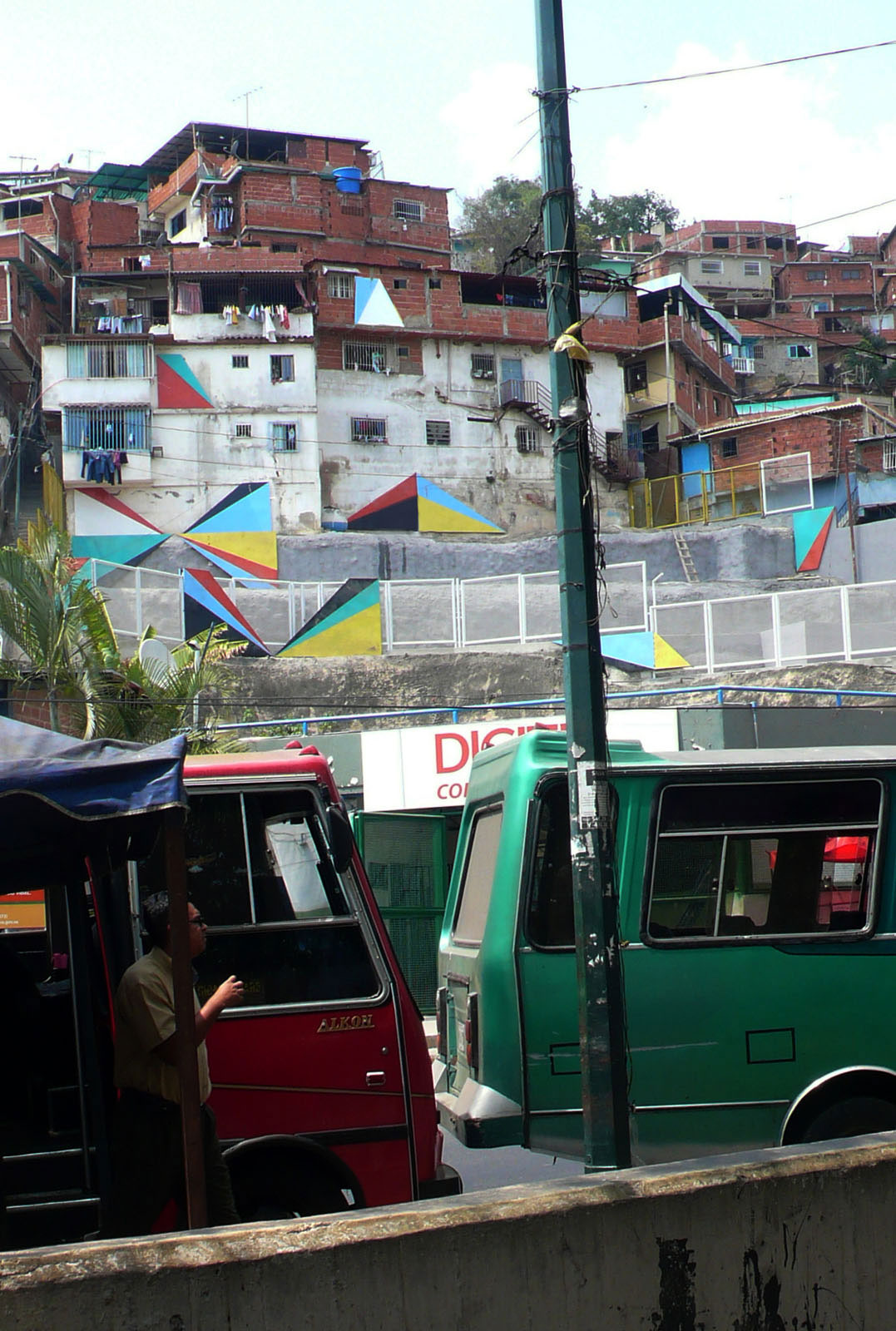DIAMANTE DE LAS SEMILLITAS
Barrio José Félix Ribas, Petare, Caracas
2011
Commissioned by Alcaldía de Sucre
‘Diamante de las Semillitas’ is a site-specific public art work in Petare, a very densely populated area in Caracas. Constructed from painted stainless steel, it stands in both the newly-built park and pre-existing baseball practice ground for children. The commission came from the local government which is traditionally an area of strong opposition to Chávez´s ruling party. The site is in front of a square that has the Palo Verde train station on it, the last stop on the main underground trainline.
(From the talk given at the Architecture Association in 2010) “I was approached by the local government via curator Jesús Fuenmayor, he introduced me to the site and context and told me the ideas they had for the park they wanted to build. The main space where the work was to be placed is a main thoroughfare between the new park, the hillside with its two stairways on each side leading to the houses, the metro exit in the square in front, and the square itself with all the commercial life it contains; together it can all be seen as a painting. The piece wants to join all these areas visually, uniting them to create pride in those who live nearby, and hopefully admiration in those who visit it. I witnessed the way children use the park and how the adults see the benefit of knowing where their children are playing at all times. My work is confined to the park but yet enlarges it, connecting it physically and psychologically to its surroundings.
The idea was that the metal sheets should look like they have fallen in no particular order onto the ground. They should look slightly random, I wanted them leaning on houses that had bare concrete or visible brickwork. Maybe it will take a while for the work to sink in and become the landmark that I want it to be, but I am sure the positive change is already being felt.
There is a tradition from the 50s in Venezuela that has been forgotten in recent years, that of art interacting with architecture in a very positive spirit. This spirit reached its climax in Carlos Raúl Villanueva’s Ciudad Universitaria de Caracas, and his application of the concept of a ‘synthesis of the arts’. But the fifties also spoke of opulence; there was an abundance due to the rapid growth of the oil economy. Some of the projects from those years nowadays seem failed, and those are mainly the ones connected with public housing, others instead, like the works done in industrial areas, are still an example to the world. Today we must work with the same optimism but are obliged to do so with less means, adapting to what is available. Public art is not synonymous with infinite resources; neither does it have to conform and become cheap muralist propaganda.
In projects like these in Venezuela, a very typical mistake was to deal with the facade only and not with what lies behind it. While I strove to avoid committing the same mistake, it was impossible to repair all the houses and improve the conditions of all the units, which is what was desperately needed, because there were simply not enough means to approach the project in that way. Furthermore, I was not called on to fix the infrastructure but to improve the quality of life by more subtle means, that of art.
Normally my approach to works like these is to consider the views of all the people involved, and to work with them before forming any clear ideas. On this occasion I worked initially with only the space in mind, having spoken with the curator, the official in charge and a community leader from the area. The work of the curator was key in these stages, but it was not until I physically visited the site that I started working on what the final project would really look like. Most of the original ideas I had about the space changed, and I had the chance to meet the people, which gave me more confidence. Besides this, there was plenty of exchanges of ideas with the architect and with the people in charge of the installation and maintenance, which affected details of the work. Before being finalised, the project was approved by the population. I believe that if a work is sufficiently open and gentle, it will create beneficial outcomes within the locals, positively affecting how they perceive their own community. Negotiations were to the detail, each and every plaque was negotiated with each house owner where it was installed. We worked from the general to the particular.”


